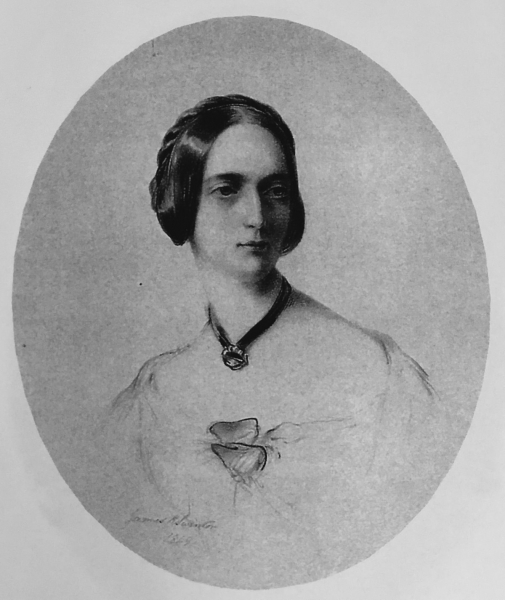The Countess of Dunmore
8th March
A brief biography of the woman who brought Harris Tweed® cloth to the world
Lady Catherine Murray, Countess of Dunmore, is often cited as the driving force behind the development of the Harris Tweed® industry in the nineteenth century. She is remembered however, not only for her entrepreneurial eye, but also for her philanthropic qualities, with the Duchess of Sutherland proclaiming her to be ‘a mother to her people in Harris’.
Born Catherine Herbert on 31 October 1814 to the distinguished 11th Earl and Countess of Pembroke, aged 22 she went on to marry Alexander Murray, Viscount Fincastle, later the 6th Earl of Dunmore and proprietor of the Isle of Harris. Taking up residence in London, the couple had close connections within court circles as Catherine was given the socially prestigious appointment as Lady of the Bedchamber to Queen Victoria in 1841, while their children enjoyed a privileged childhood filled with play dates in Buckingham Palace with the future Edward VII.
A world away from the luxuries of court life, the coming years saw turmoil and great difficulty for the islanders on Harris as they were confronted with a series of struggles beginning with the religious Disruption in 1843. The fatal failure of the potato crops began only a year later as Blight swept across the islands, and further disruption was felt with the resettlement of the village of Borve in 1847. The Dunmores were faced with their own personal tragedy as 1845 saw the untimely death of the Earl, leaving Catherine a widow with three children and another on the way.
This was a complicated and difficult time for the Countess as the Earl’s death saw her inherit the Hebridean island, leaving her in charge with the running of a 150,000 acre estate that was facing desperate times. This prompted her to take a more active interest in the estate as she resigned as Lady of the Bedchamber and took it upon herself to act as ‘Tutor’ to the 4 year old heir, Charles.

The Highland Potato Famines left the communities destitute and starving and Catherine endeavoured to alleviate the hardships of the estate through a series of relief operations. In 1847 an application was made on behalf of the Countess to the Government for a sum of £500 to provide employment to the people so that they could afford meal. She also offered financial assistance for those of her tenants wishing to emigrate to North America. The Countess met their spiritual needs with the building of the Free Church at Manish and the restoration of St Clement’s Church at Rodel.
Catherine also involved herself in the encouragement of home industries, making payments towards woollen manufacturers such as spinning and knitting so that women had more employment opportunities enabling them to earn a wage. There was also the establishment of the Embroidery School at An T-Ob where the local women were taught how to embroider cambric for trousseaux and layettes.
By 1850, the Countess and her four children had relocated further north to Selkirk in Scotland. It was supposedly around this time that she threw herself into the development of what would become the Harris Tweed® industry as she began introducing finished tweeds amongst her aristocratic circle of friends and establishing connections with Edinburgh and London markets. 1857 also saw Catherine establish a Stocking Knitting industry with a ‘Mrs Thomas’ in Harris enabling the local women to generate income from their skills
The Countess made it possible for her female tenants to earn a living by providing stimulus and encouraging the selling of their homespun cloth. Her vital role in the development of the cottage industry would see the transformation of the sustinence textile into a commercially viable fabric that would become known throughout the world as Harris Tweed®.
Catherine died aged seventy-one on 12 February 1886 at Carberry Tower in Musselburgh.
Read more about the history of the Harris Tweed® industry:
